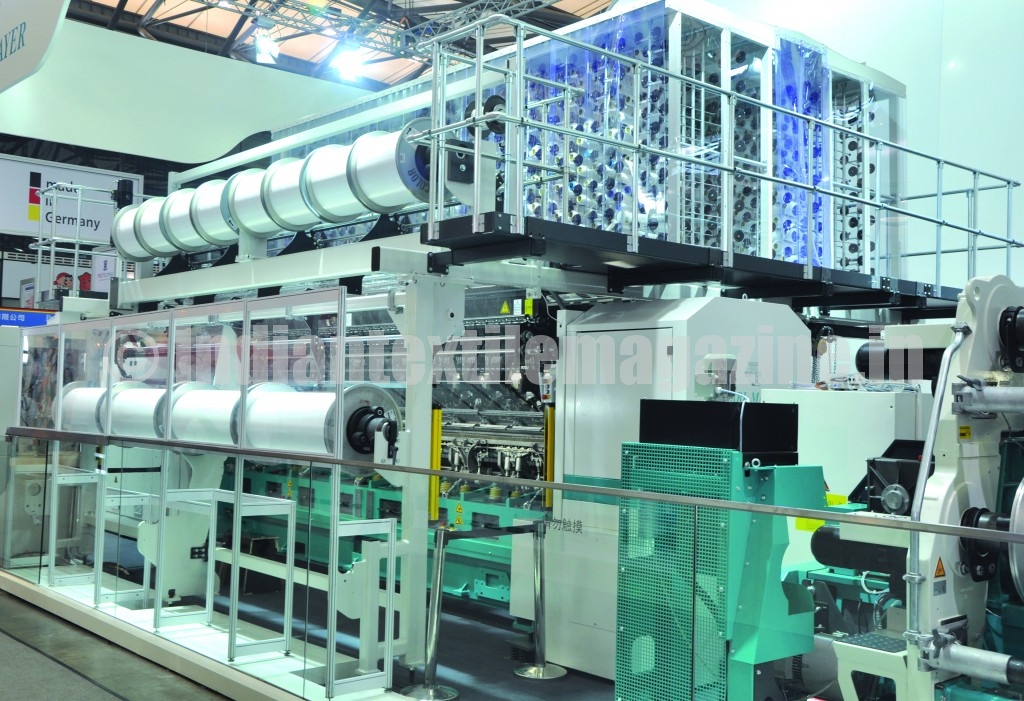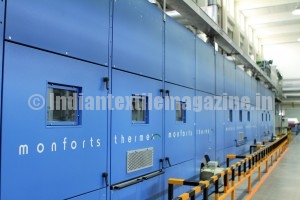Interview with Mr. Thomas Waldmann, Managing Director, VDMA Textile Machinery Division

Despite the textile manufacturing industry moving to Asia, Europe continues to be the Mecca of innovations in technology and machineries for textile manufacturing. German companies have a dominating presence in the field of textile machineries. India is rated among the top four major markets worldwide for German textile machinery manufacturers.
Mr. Thomas Waldmann, Managing Director, VDMA’s Textile Machinery Division, representing the association of German machinery manufacturers, shares his views on the global textile industry, particularly on the prominent Indian market.
Excerpts:
Question: What is the market for German textile machinery at the moment?
Answer: After two excellent years, the business climate in the global textile industry became more moderate in 2012. This was also reflected in the order intake of the German textile machinery industry that was below the figures of 2011, but still on a satisfying level. German textile machinery exports reached 1.82 billion Euro in the first half of 2012 (minus 2.7 per cent year-on-year).
Q: What are the indications like for the year ahead (2013)?
A: According to a VDMA survey in September, among some 50 CEOs of the German textile machinery industry, there are chances for growth in 2013. Almost 43 per cent of the participating CEOs expect an increase in incoming orders compared to 2012, 38 per cent expect the order intake in 2013 to be at the same level as in 2012, and only 19 per cent stated that the order intake will decrease.
A look at the respective markets showed that China is slightly tending to positive levels. Among other markets, Indonesia and Turkey are expected to perform well in 2013. Better business is also expected in India, Bangladesh and Vietnam.
Q: How many VDMA members participated in India ITME?
A: A total of 43 member-companies exhibited at India ITME 2012. The German exhibitors covered almost all machinery chapters – spinning, chemical fibre production, nonwovens, weaving, knitting and warp knitting as well as finishing.
Q: Is there growing interest in the Indian market from your members?
A: India is traditionally a top market for German technology. In the long-term view, over the last decade, India was among the top four markets for German textile machinery. The importance of this market is also reflected in the German companies that are manufacturing within India.

Q: Are VDMA members increasingly exporting machinery to India? Do you have any figures/statistics on this?
A: Between January and July 2012, German textile machinery worth 111 million Euros was shipped to India. This was clearly under the results of 2011. There are various reasons for this performance like uncertainty in the Indian industry regarding procurement of raw material or financing. But, given the big potential of the Indian textile sector, the general perspective is encouraging: The Indian middle class, the target consumers for many companies, is expected to swell up to 267 million people in the next five years, up 67 per cent from the current levels, thus providing a great market opportunity for firms. So in the mid-term perspective, the Indian textile sector could benefit not just from exports but also from a huge domestic market.
Q: In which areas are German companies particularly strong?
A: The strengths of German companies become obvious if one considers the entire life cycle of a machine: During the entire lifetime of a machine, the investment costs represent only about 10 to 50 per cent of the overall costs. This phenomenon is comparable with an iceberg – only its top is visible from above the water surface while the real iceberg (e.g., maintenance costs) lies underneath. Therefore mills are increasingly looking at the accumulating costs over the life cycle in a textile mill, and there are many expense factors to examine. First of all, there are the costs of acquisition, installation and start-up. While these costs could be determined quite clearly in the beginning of a negotiation, there are many costs which are often not transparent at first glance: Costs for maintenance, service and repair – but also for energy and operating, the influence on costs for raw materials like fibers and yarns and the production waste, environmental costs (for certificates and special filters), costs for unscheduled repair, disposal, staff and so on. To put it in a nutshell: The initial price for a German machine pays off after a few years due to low maintenance costs and reliability in production.
Q: How do you view the current condition in the Indian textile industry?
A: Of course in 2012 the Indian textile industry did not gather the momentum that was expected – for various reasons. But as mentioned earlier, the general direction and the potential are encouraging. In 2012 we could witness a shift in the international order situation. China is still the number one market for textile machinery, but in general, orders are more internationally distributed than in the past. India has all chances to improve its business position further in the textile world.

Q: What are the key growth areas for the German textile machinery industry?
A: Areas with growth potential are generally those textile manufacturers that intend to enter high quality markets, e.g., high quality garments or technical textiles. High product quality requires high quality machinery, so textile producers aiming for sophisticated products usually choose German machines.
Q: How stiff is the competition your members are facing and from where? How are they responding to this?
A: In the machinery segments that are aiming at high output of standard textiles, the Chinese textile machinery manufacturers are a severe competition of course. And the Chinese are catching up in other machinery segments too. Our response to the increased competition is continued high investments in R&D. Our unique advantage is the high quality and creativity of our engineers who are able to develop really innovative in technology. The VDMA Textile Machinery Association has a foundation dedicated to promote junior engineers. Supporting young talents is the basis for our technological leadership.